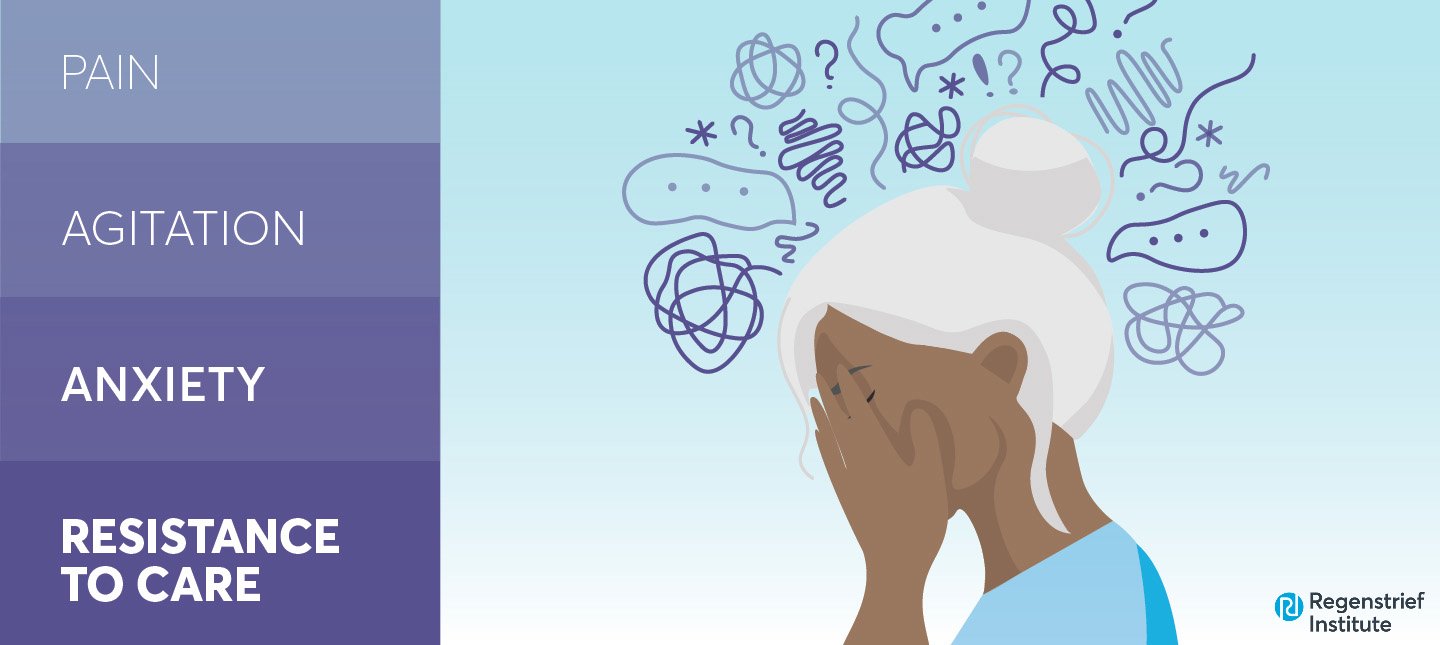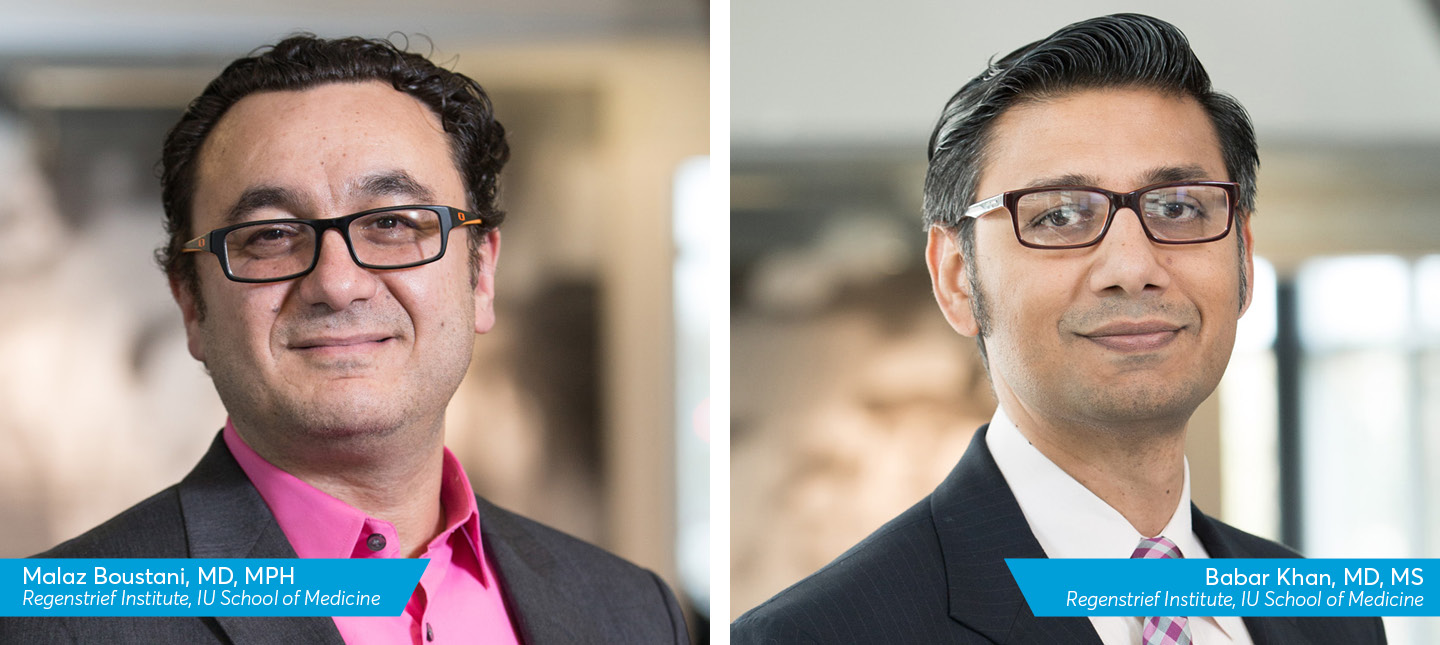Statistics indicate possible benefit of home-based palliative care interventions
New data shows that the symptoms suffered by people with advanced Alzheimer’s disease and related dementias who live in the community occur at a strikingly similar rate to those of dementia patients in a nursing home. The study from Regenstrief Institute and Indiana University School of Medicine is one of the first to look at dementia symptom prevalence in the community population.
Dementia currently affects about 5 million older adults in the U.S., and its incidence is expected to more than double over the next 40 years. More than 21 million people in the U.S. are providing unpaid care for someone living with dementia. Because there is no cure for the disease, the goal is to manage dementia symptoms to alleviate patient discomfort and reduce caregiver burden.
Researchers took baseline survey data from a five-year randomized clinical trial funded by the National Institute on Aging named IN-PEACE (Indiana Palliative Excellence in Alzheimer’s Care Efforts) and analyzed responses from caregivers regarding symptoms.
The most common symptoms include:
- Pain
- Agitation
- Anxiety
- Resistance to care
“We found that both the rate and types of symptoms suffered by community-dwelling people with dementia were very similar to those in a nursing home setting,” said first author Kurt Kroenke, M.D., Regenstrief research scientist and professor of medicine at IU School of Medicine.
“More than 40 percent of these people were experiencing these symptoms at least weekly. The symptoms are not subtle, they are not infrequent, and they do have a significant impact on the quality of life for patients and caregivers,” Dr. Kroenke continued. “However, they often go unreported in primary care settings. It’s an area that requires more attention during routine care.”
Regenstrief and IU School of Medicine researchers and clinicians are attempting to address this issue with palliative care interventions through the IN-PEACE trial. They are testing a collaborative care model using nurses and community health workers to help manage symptoms and provide caregivers with support.
“These baseline numbers will help us to see if palliative care eases the symptom burden,” said senior author Greg Sachs, M.D., a Regenstrief research scientist and a professor of medicine at IU School of Medicine. “While we gather data from the clinical trial, this initial information shows the need for providers to make room for symptom discussion in primary care.”
A unique aspect of IN-PEACE: more than 40 percent of enrolled subjects are Black. Dementia clinical trials often have 10 percent or a smaller proportion of subjects who are Black.
“Prevalence and Predictors of Symptoms in Persons with Advanced Dementia Living in the Community” is published online ahead of print in the Journal of Palliative Medicine. This research was supported by the National Institutes of Health’s National Institute on Aging, R01 award (R01 AG057733).
In addition to Drs. Kroenke and Sachs, authors are Sujuan Gao, PhD of IU School of Medicine; Kelly M. Mosesso, M.A. of IU School of Medicine; Susan Hickman, PhD of Regenstrief Institute and Indiana University School of Nursing; Laura R. Holtz, M.S. of Regenstrief, Alexia M. Torke. M.D., M.S. of Regenstrief and IU School of Medicine and Nina M. Johnson, B.S. of Regenstrief Institute.
About Kurt Kroenke, M.D.
In addition to his role as a research scientist at Regenstrief Institute, Kurt Kroenke, M.D., MACP, is also a professor of medicine at Indiana University School of Medicine.
About Greg A. Sachs, M.D.
In addition to his role as a research scientist at Regenstrief Institute, Greg A. Sachs, M.D., is chief of the Division of General Internal Medicine and Geriatrics at Indiana University School of Medicine. He is also a professor of medicine and neurology at IU School of Medicine.
About Regenstrief Institute
Founded in 1969 in Indianapolis, the Regenstrief Institute is a local, national and global leader dedicated to a world where better information empowers people to end disease and realize true health. A key research partner to Indiana University, Regenstrief and its research scientists are responsible for a growing number of major healthcare innovations and studies. Examples range from the development of global health information technology standards that enable the use and interoperability of electronic health records to improving patient-physician communications, to creating models of care that inform practice and improve the lives of patients around the globe.
Sam Regenstrief, a nationally successful entrepreneur from Connersville, Indiana, founded the institute with the goal of making healthcare more efficient and accessible for everyone. His vision continues to guide the institute’s research mission.
About IU School of Medicine
IU School of Medicine is the largest medical school in the U.S. and is annually ranked among the top medical schools in the nation by U.S. News & World Report. The school offers high-quality medical education, access to leading medical research and rich campus life in nine Indiana cities, including rural and urban locations consistently recognized for livability.










